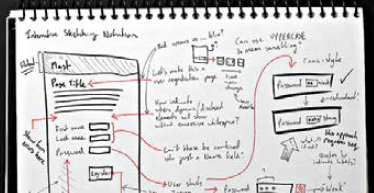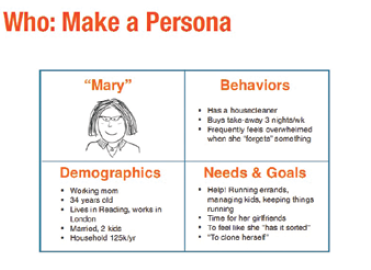You might have heard of the term ‘UX’ quite often. Ever wonder what it is? Or did you merely dismiss it thinking that it’s something related to the UI? The UX has become an important part of the product development cycle. Many industries are hiring UX professionals to shape their product. If you’ve always been curious about the term, here’s an in-depth guide to introduce you to UX.
What is UX?
UX is an acronym for ‘User Experience’. It defines how a user feels while interacting with the system. The system could be anything – a website, a mobile app or even a desktop app. UX shouldn’t be confused with UI, as both are entirely different concepts. Here’s a brief explanation of both concepts.
• UI: This is an acronym for ‘User Interface’. It deals with how a website or an application looks. It covers the entire look of the application including the colors, fonts, icons and images used. The user interface is entirely about the visual and interface design.
• UX: It deals with how easily a user can, well, use the app and how easily the app would serve to satisfy his requirements. Consider this example: Say, you’re making a mobile app. When designing the interface (UI) of your app, you should not only Consider how great your app will look, but also how easy it will be to use, i.e. how great the user experience (UX) will be.
The all-new minimal ‘Material Design’ by Google
Suppose your UI looks exceptionally good (think: along the lines of Google products), however, after opening your app the user doesn’t understand what he’s supposed to do next. Then, no matter how great your app looks, it will be completely useless. A UX-rich app, on the other hand, will itself guide the user about what he’s supposed to do next.
It will answer the first question that comes into the user’s mind – “Why am I here?” An app’s efficiency is directly related to its UX design. The more efficient your app, the better is the UX design and vice versa. UX is eventually related to UI as the UI must be designed in tandem with the UX principles. The person who studies and evaluates this is a User Experience Designer.
UX Designing – What does it involve?
UX designing is something that anyone can do, but the problem is not everyone can do it well. Two things you should keep in mind before starting off :
1. Know thy user
2. You’re not the user
Before starting off with the design, you should know about your user base. This is a very important step, since without knowing about targeted users, their habits and tendencies you can’t design a good experience. In most cases, you aren’t the user. That’s why a design you find easy to use won’t be the same for other users. Similarly, what works for one set of individuals may not work for another set, because as human beings, everyone is different. Hence, UX designing may not work well every time. To deal with this, since we can’t predict the actual experiences, specific user experiences and behaviours are generalised and used.
UX designing starts by considering the requirements. These can be:
• Business requirements, that are put forth by your company
• Design requirements, which includes a specific design to be used
• Technology requirements, which deal with the programming language and platform you’ll be using
• User requirements
Once you’re aware about the requirements, you’ll go ahead and analyse the user base. Consider the following questions before proceeding:
1. Who is your user base?
2. Does your user base demand some special requirements?
3. Do they want you to solve a particular problem?
4. What mental models of a user do you need to consider?
5. Why will a user use your product?
User Interface mock-up made after the user analysis
6. When will a user use your product?
7. How will a user use your product?
8. Are there any accessibility concerns you need to take care of?
After collecting all this information, you need to analyse the functions of your product. You should consider “What primary action does the user need to perform?” This is the main task that your product will perform. While your product can have various functions, analysing its most primary function and designing the product accordingly for a particular user base will add to its great UX design.
Sketch the elements of the UI to get a rough idea of the design
Secondary task or several primary related tasks will follow then. You should consider what the user will do next, how he will end up doing the secondary task and design the experience accordingly. In addition to this, you should consider whether there are multiple methods to perform a singular task, what kind of help you need to provide the user, what errors might occur and what inconsistent state the user might end up in. With this, the analysis phase considering the user’s point of view is over. Next, you’ll get into the technical terms to figure out your course of action for handling the functions that you’ve determined will happen.
You must be able to forsee what will happen at the front and back end, and decide what technology you need to adopt for quick retrieval of information, such as whether to rely on local database or use a database server. Imagine your user to be the laziest person on this planet, and automate most tasks to require minimum (and, if possible, no) user interaction.
An example of a persona
Sketching
You have all the data needed to start designing a user interface. Time to start sketching! This first step in creating the UI will ensure that the data collected from the user analysis, task analysis and function analysis is correctly reflected in the designed UI. Sketching on a piece of paper is fast and easy. It will help you get good ideas and eliminate the bad ones. Once on paper, you’ll easily understand where things such as options and menus need to be placed and how easy it will be for the user to get to them.
Wireframing
Wireframing is the next step in designing a UXrich UI. While sketching gives you a rough idea for the creation of your UI based upon the analysis, wireframing gives you a rough guide for the layout of your product. Wireframing is easy to perform. Neither do you need to know coding nor do you need to be good at graphic designing. There are readymade tools available with a drag-n-drop feature for creating wireframes, such as Mockingbird. These tools come preloaded with wireframed-UIs of various platforms.







